Harvestmen Opiliones
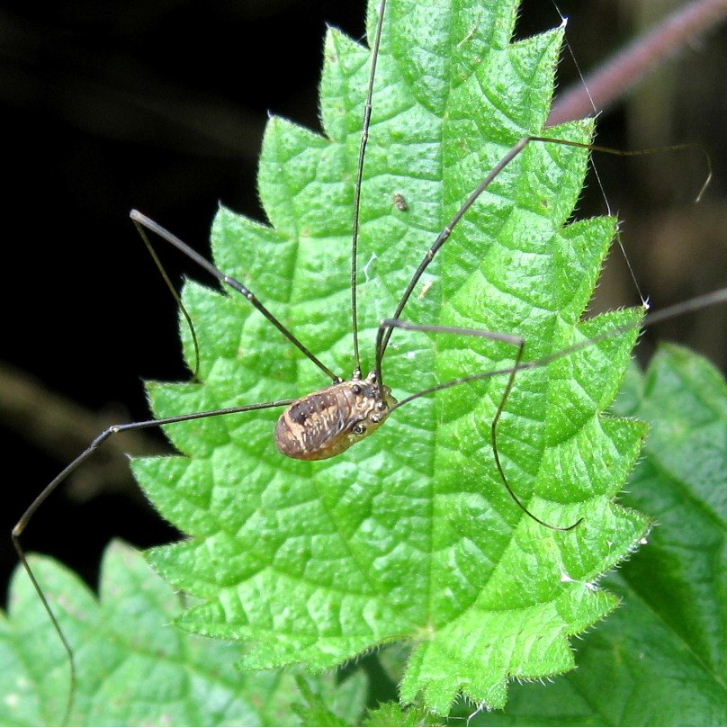 Leiobunum rotundum female
Leiobunum rotundum female
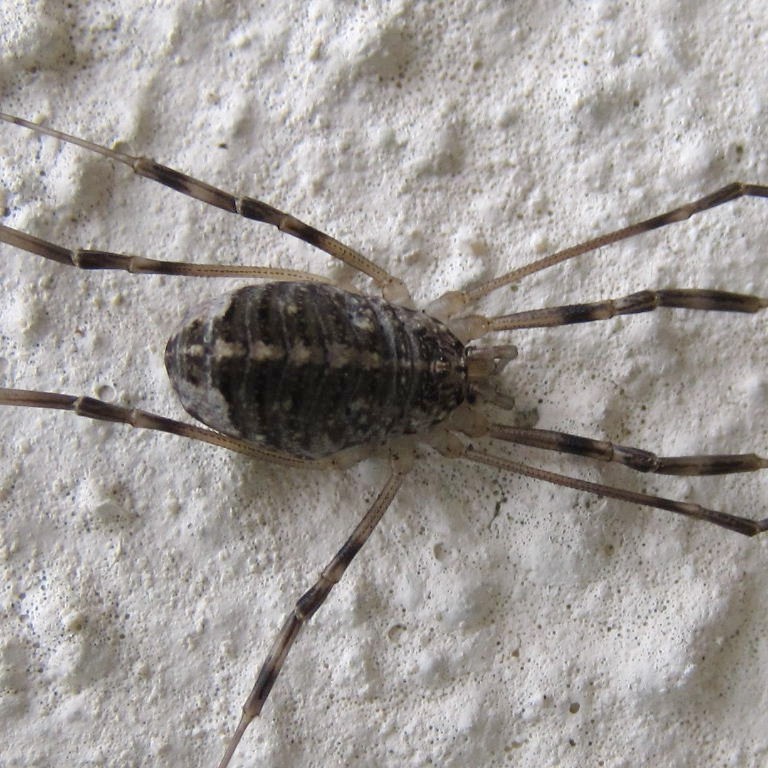 Opilio parietinus female
Opilio parietinus female
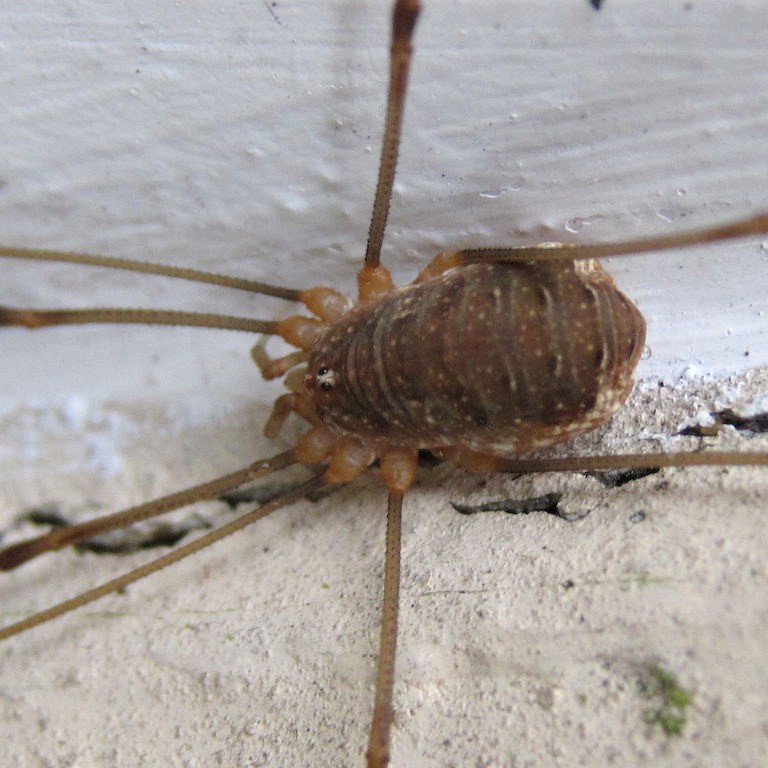 Opilio canestrinii invasive to UK 1999
Opilio canestrinii invasive to UK 1999
Although they have 8 legs and are arachnids, Harvestmen are not technically spiders.
They have only one head-body segment rather than two separate head (cephalothorax) and body segments.
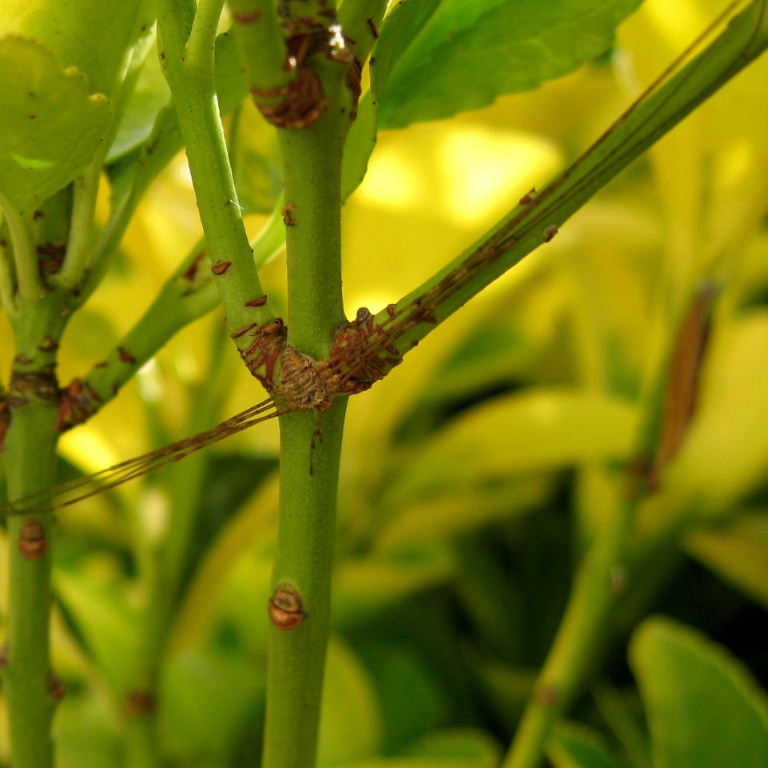
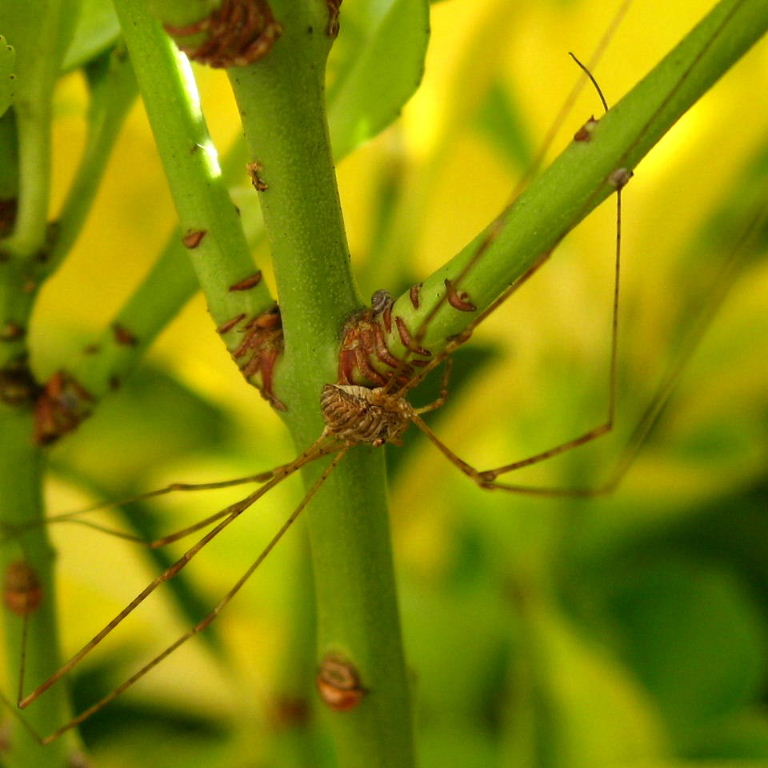
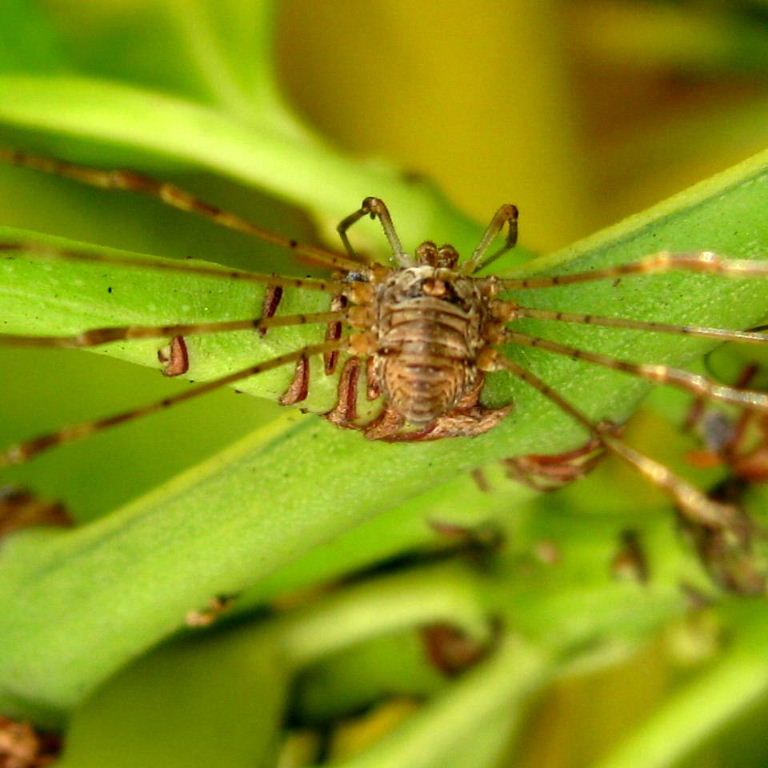
There are some 30 different species of Harvestman in the UK. The body length is usually 4-8mm.
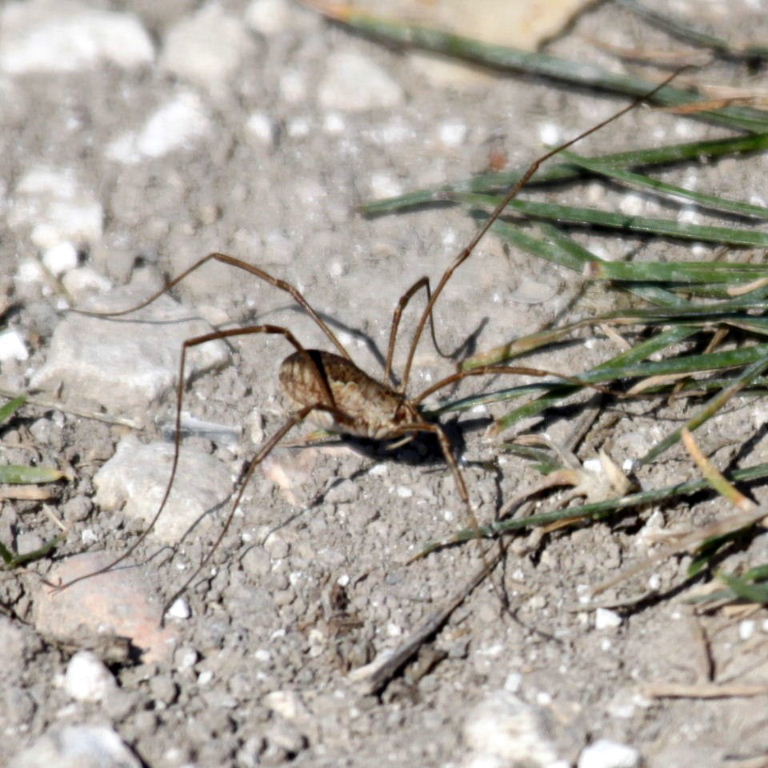
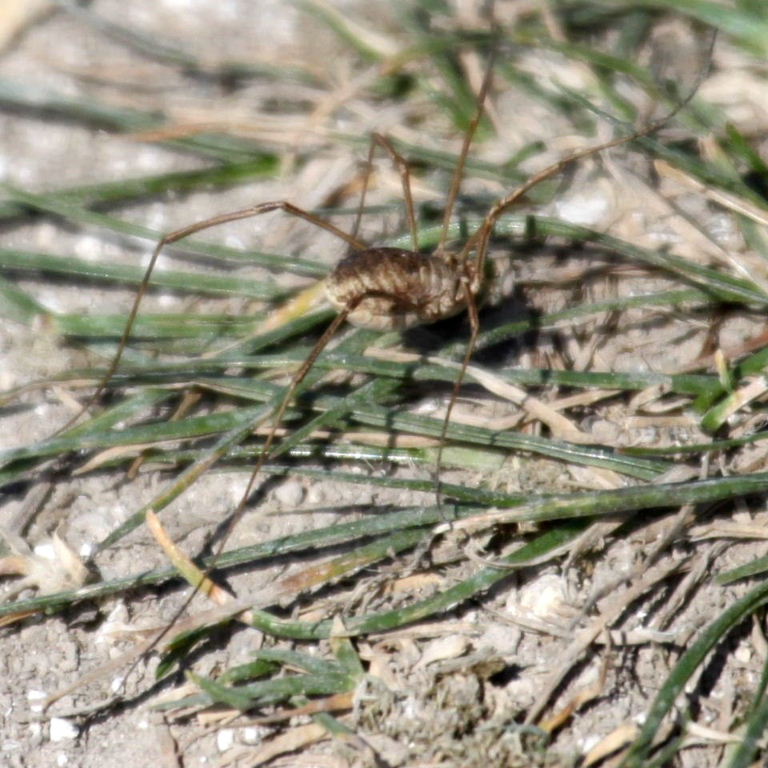
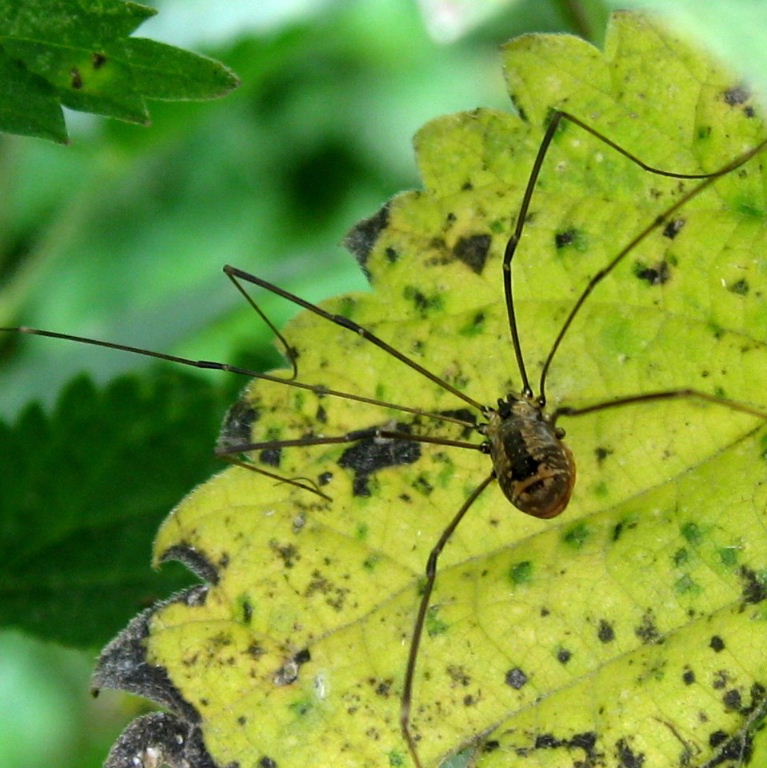
There are over 6500 species known worldwide on all continents and climates except Antartica.
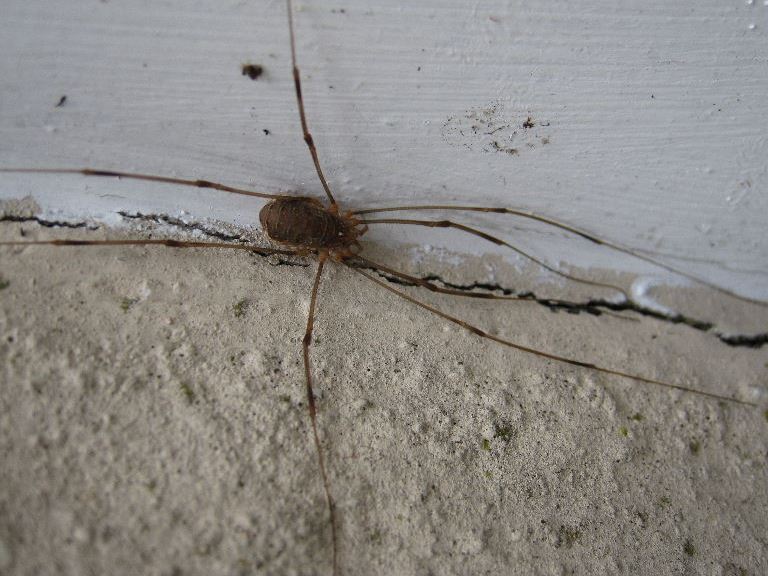
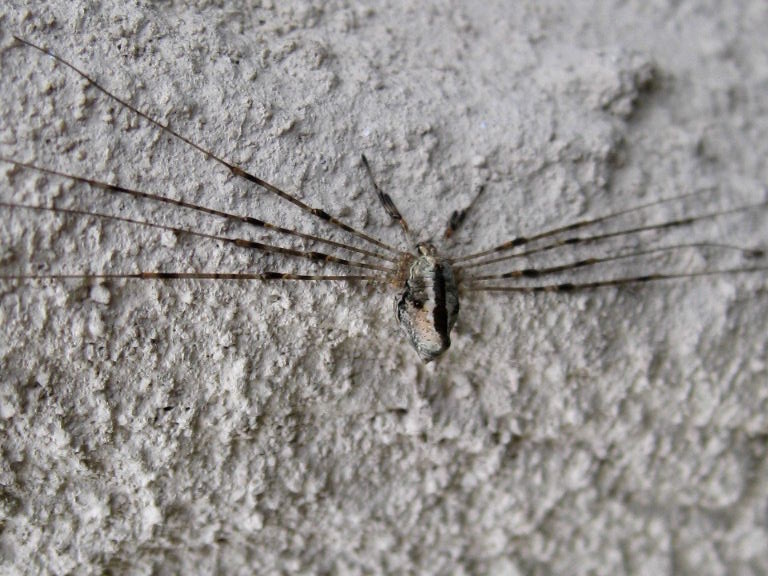
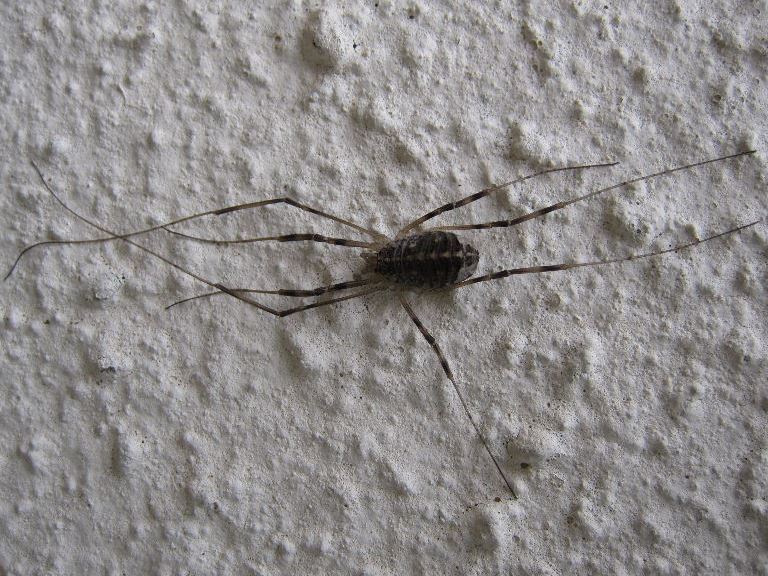
Most have extremely long legs compared to body size and most are cryptically coloured for camouflage.
They can also secrete an unpleasant-smelling/-tasting chemical against predators.
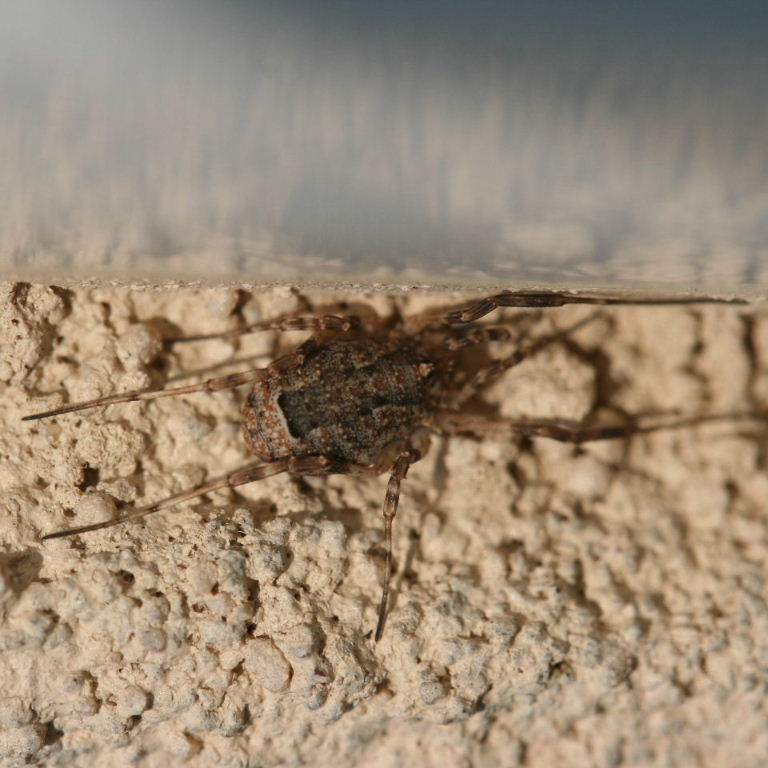
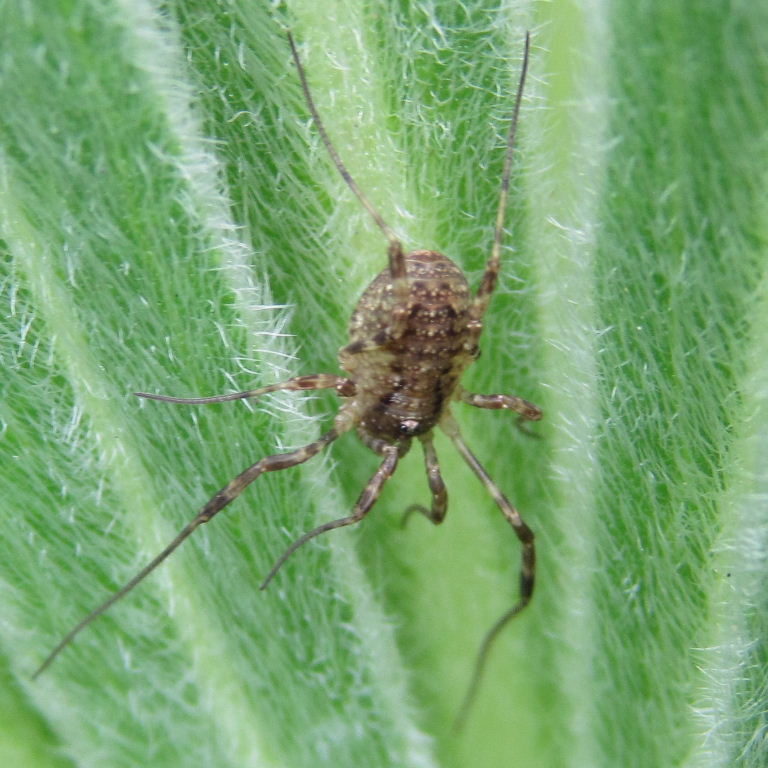
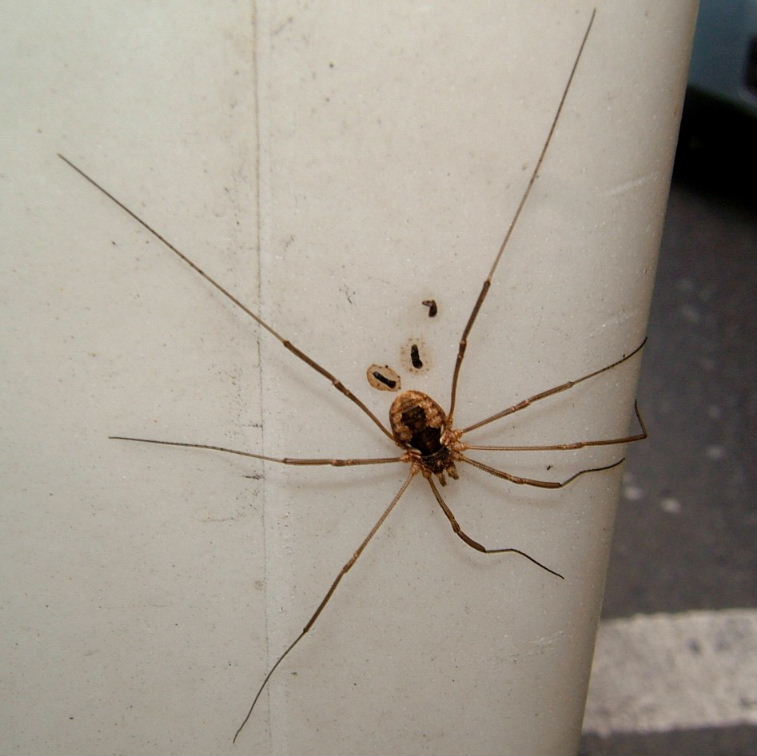
They don't build webs or produce websilk. Above left and centre Odiellus spinosus has slightly shorter,
stouter legs and a relatively stout body with a distinctive back marking.
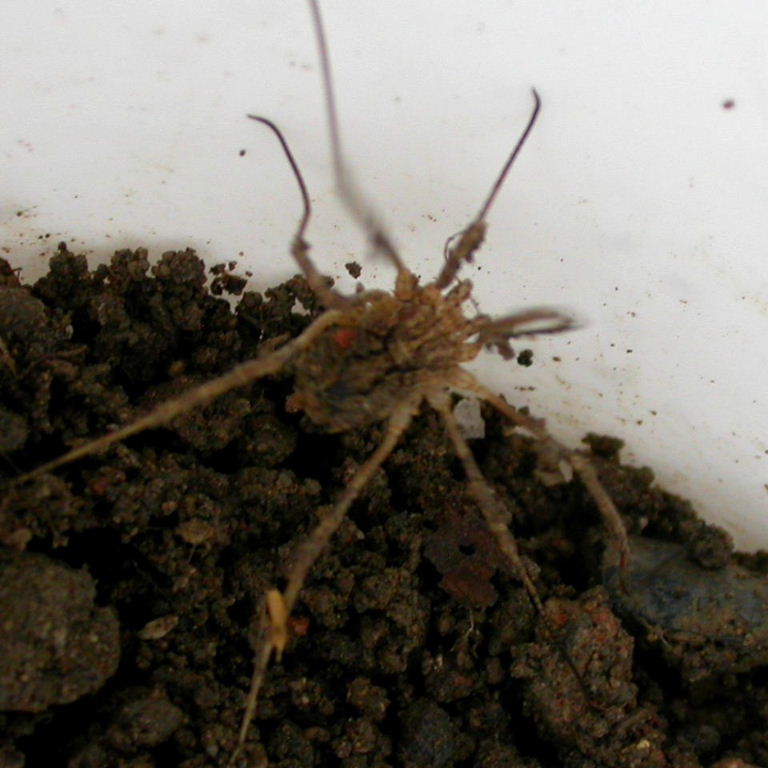
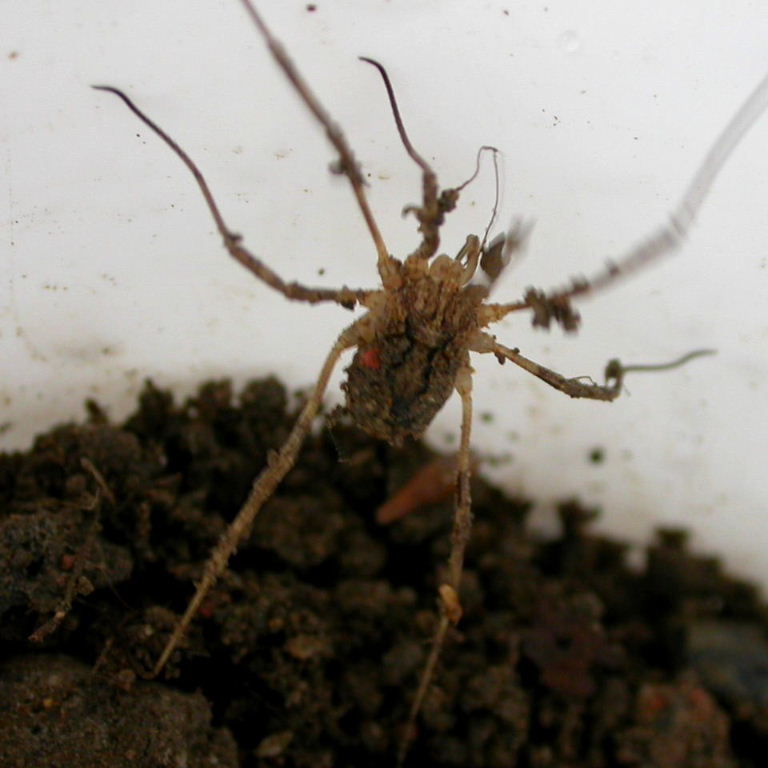
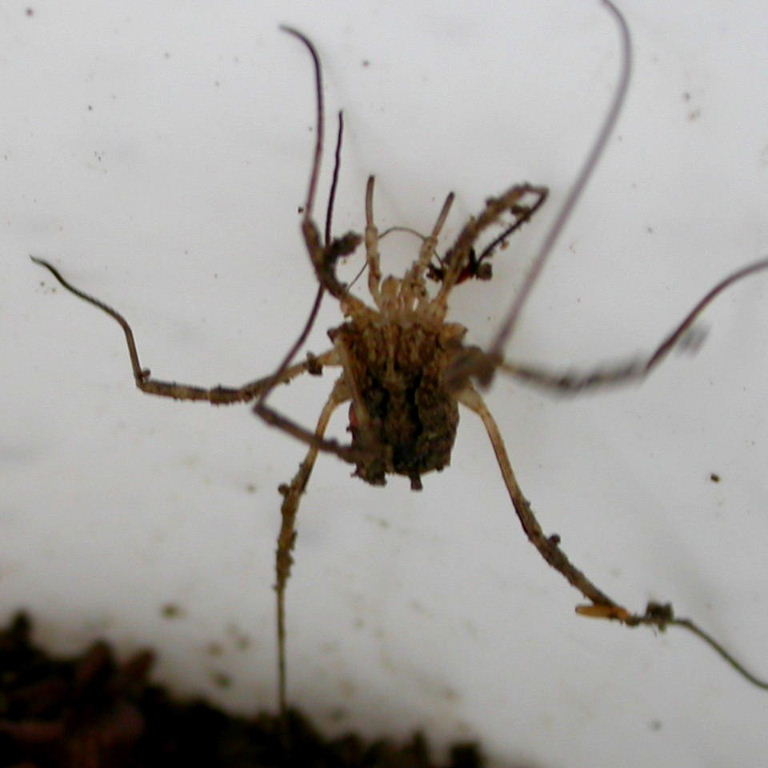
Diet can be plant, fungus or animal material, mainly by scavenging but sometimes by preying on
small invertebrates. Unlike spiders, they don't liquefy their food but eat solids.
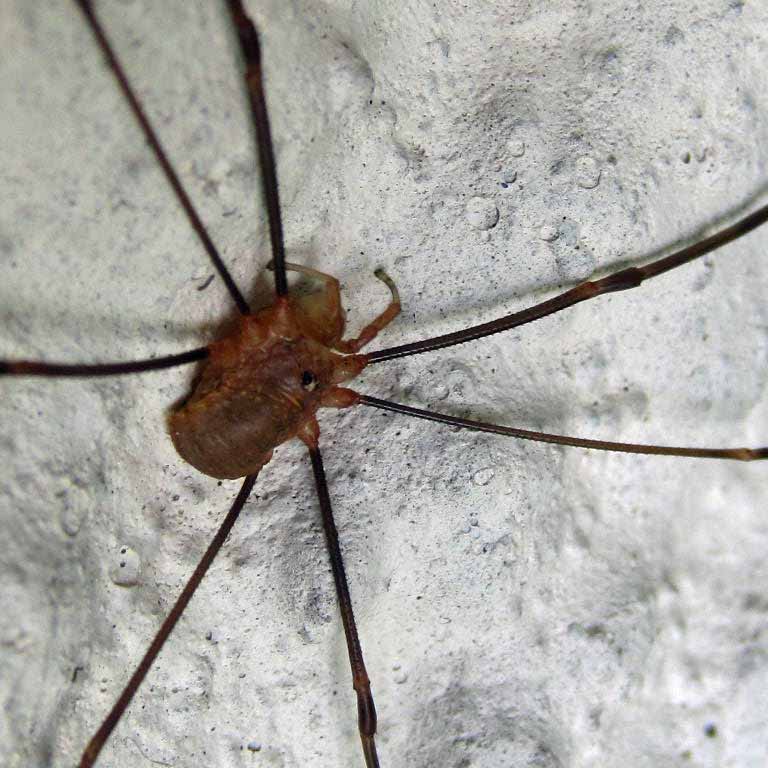
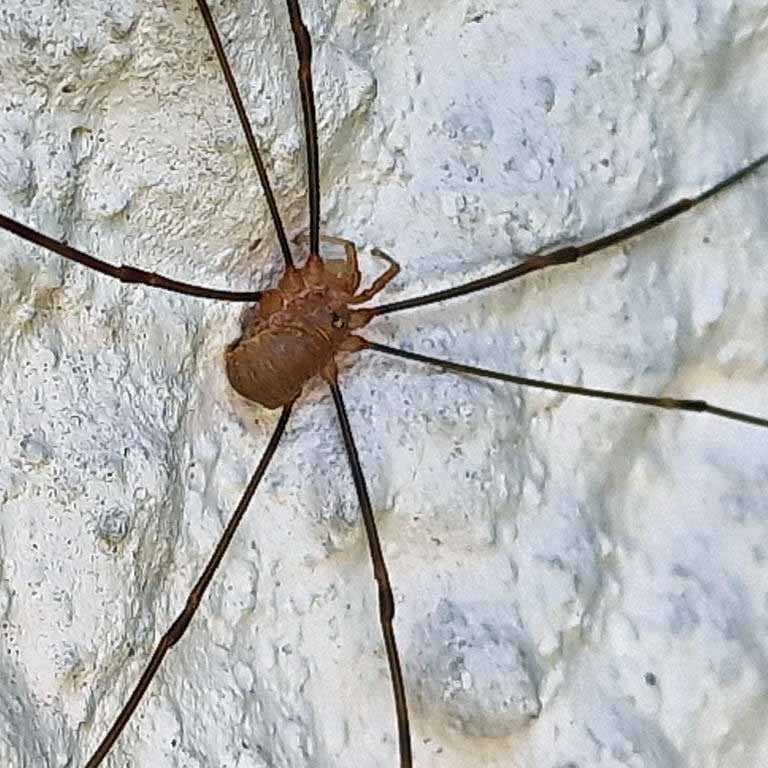
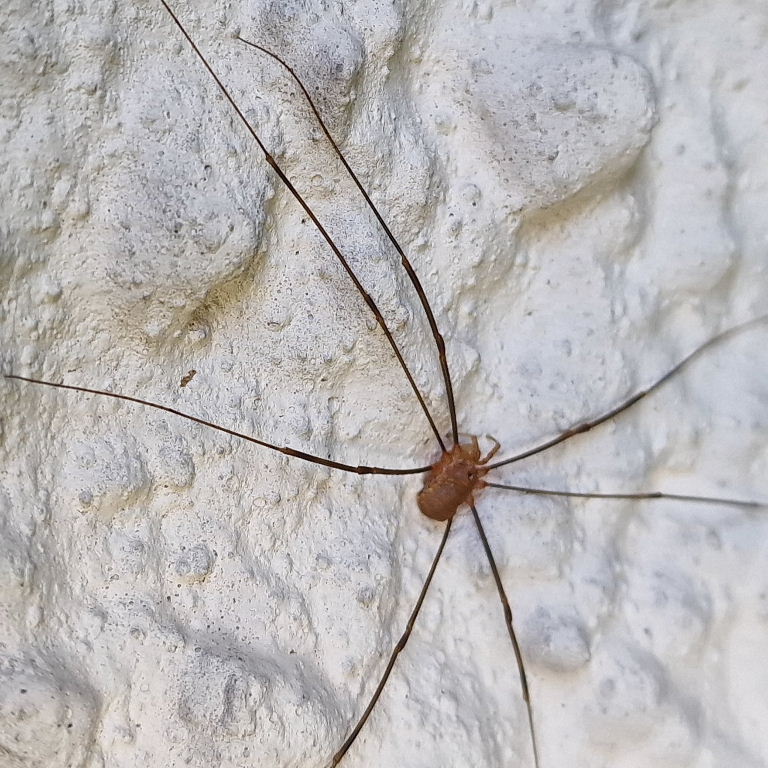
Canestrini's Harvestman, Opilio canestrinii, spread across Europe from Italy and colonised the UK
around the turn of the millenium. They are now common, particularly on house walls, and adults are found from June to December.
They are reddish brown, the male (6mm head/body, above) more red with darker, very long legs and the females (8mm, shown in top row)
more orange with slightly lighter, very long legs.
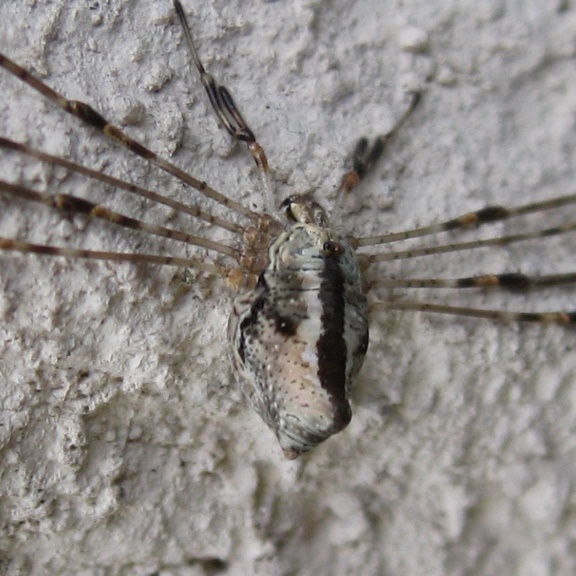
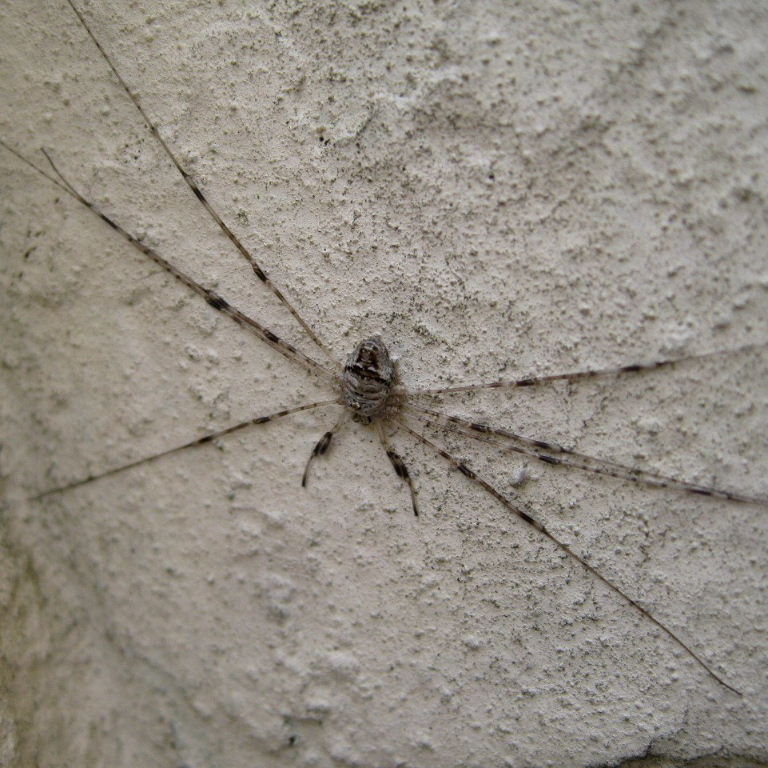
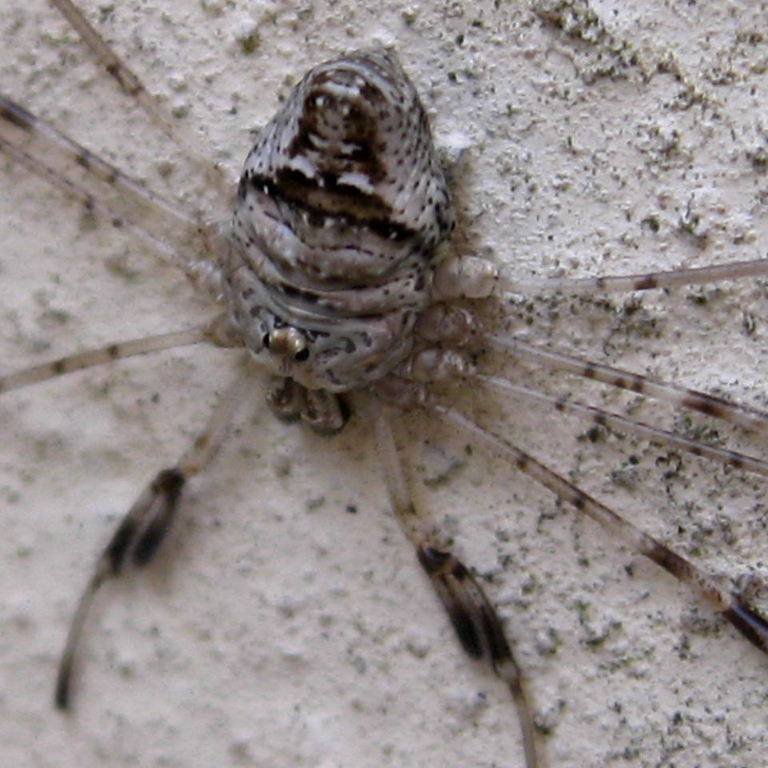
The Fork-palped Harvestman, Dicranopalpus ramosus, was distinctive in the UK with its forked pedipalps (feeders)
and its posture of resting its legs out sideways from the body. It was native to North Africa but colonised southern Europe and then northern
Europe/UK 1950-1960. Adults are found from August to November. Males have a dark eye mask; females have more dark body patches.
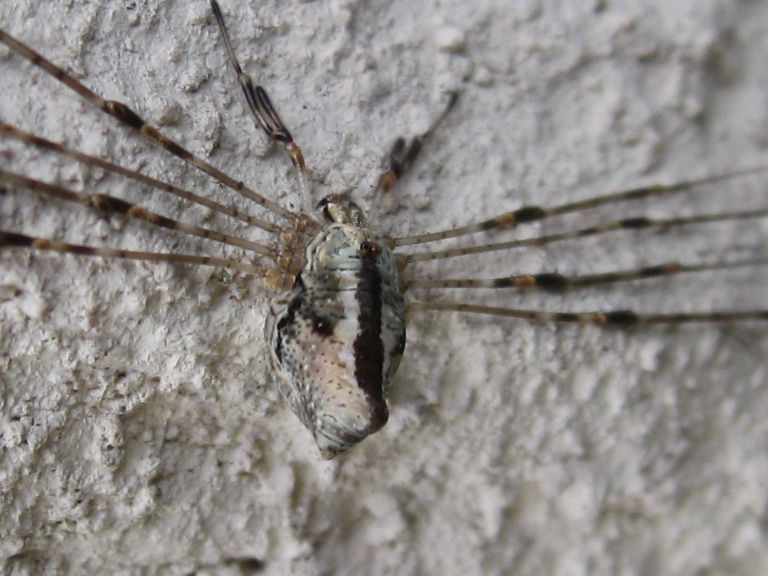
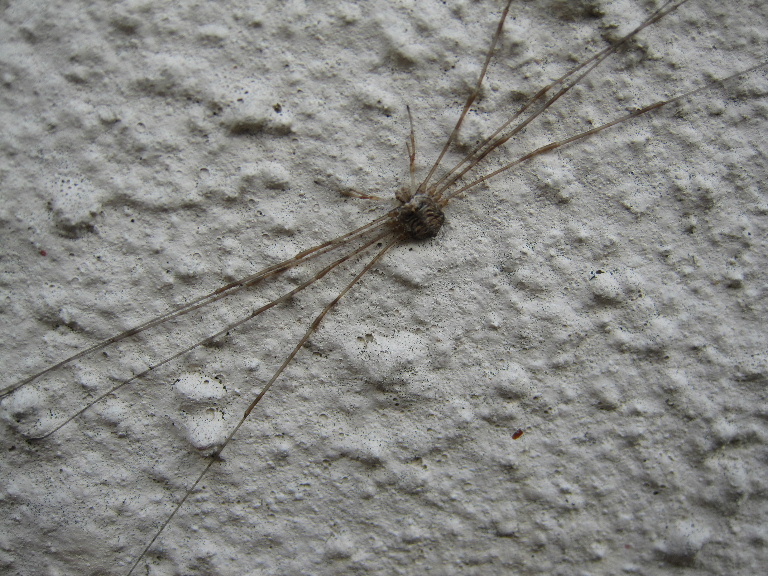
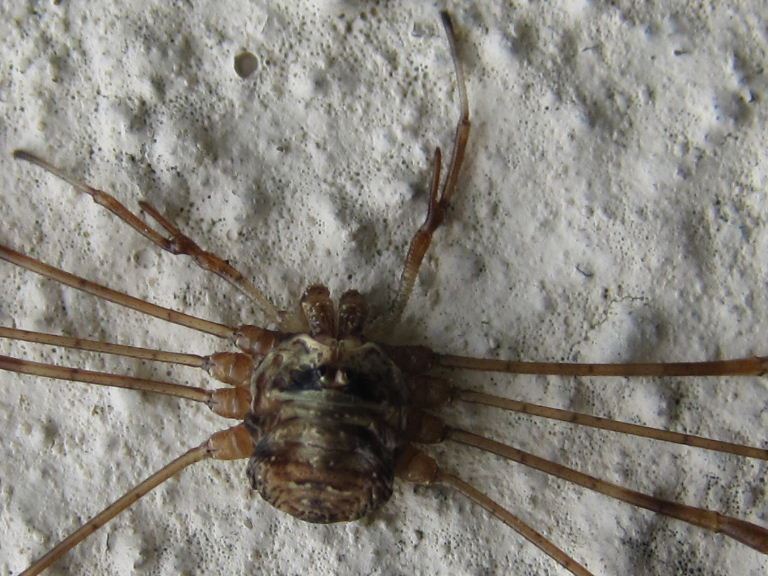
In 2015 it was established that there were in fact 2 species of Dicranopalpus with forked pedipalps
in the UK, D. ramosus and more recently arrived D. caudatus, difficult to tell apart without microscopic or DNA determination.
By 2019 a third, yet more recent, shorter-legged and rarer species, D. larvatus, was added to the UK list.
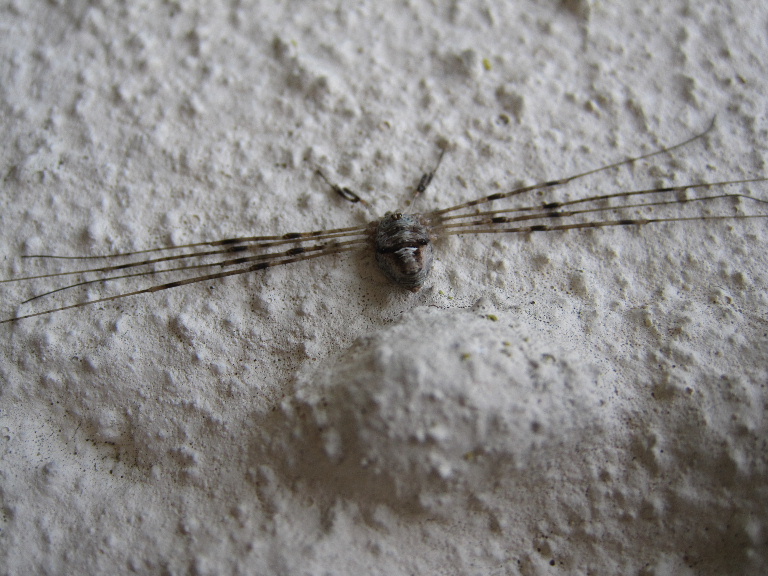
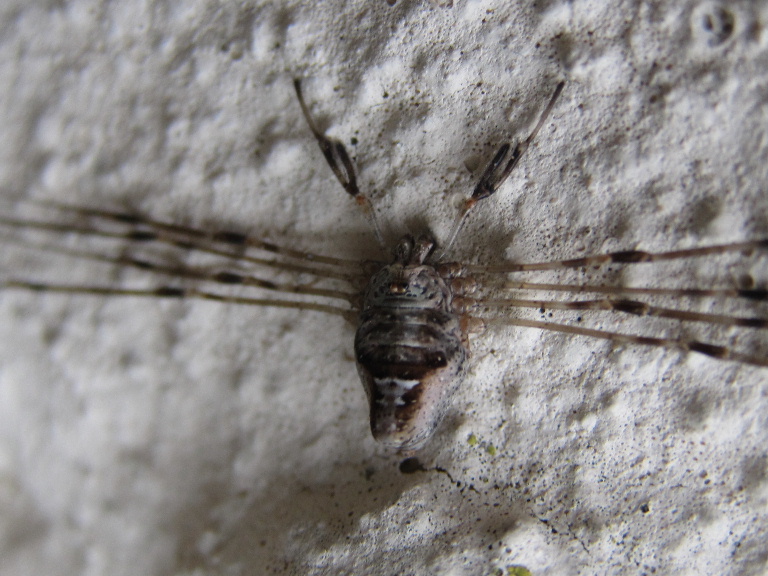
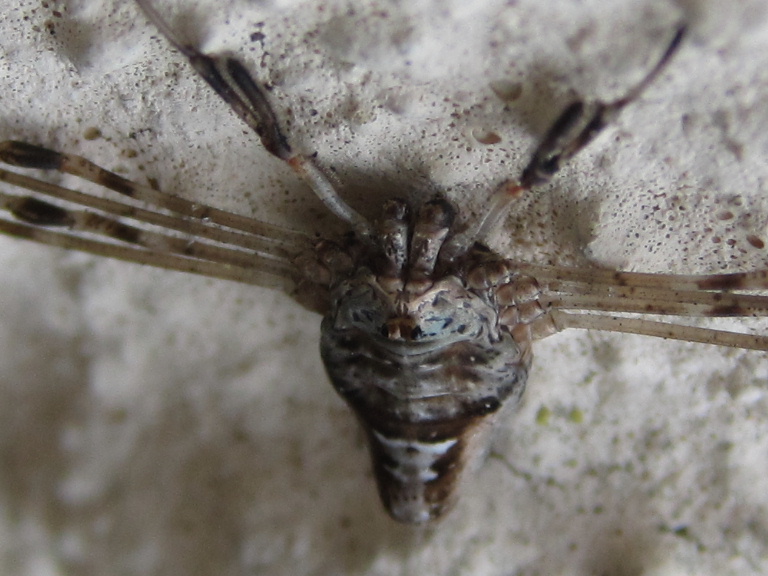
Despite the "August-November" given range, I have photographed a couple of these on the wall of my house
in southeastern England in March.

